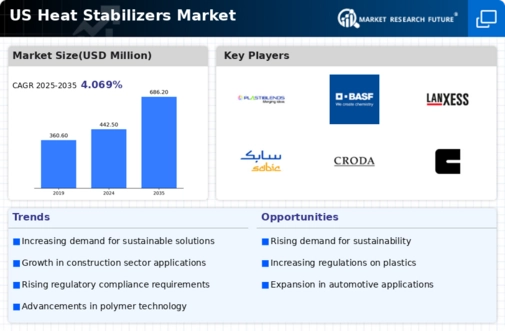The competitive insights of the US Heat Stabilizers Market reveal a dynamic landscape shaped by innovation, market demand, and evolving customer preferences. As the market grows, various players are striving to enhance their product offerings and adopt new technologies that cater to diverse industries, including construction, automotive, and packaging. In this context, understanding the competitive positioning of companies within this sector becomes crucial for stakeholders seeking to gain an edge. Factors such as regulatory compliance, product quality, and customer service significantly contribute to how companies navigate this complex market.
Furthermore, collaborations and partnerships among market players are increasingly common as companies seek to leverage each other's strengths and expand their geographic reach and market share. Plastiblends holds a notable position in the US Heat Stabilizers Market, benefiting from its comprehensive range of high-quality products that cater to a diverse clientele. The company’s strengths lie in its innovative approach to formulating heat stabilizers tailored for various applications, which has enabled it to establish a strong reputation among manufacturers. Plastiblends has also made substantial investments in research and development, ensuring it remains at the forefront of technology advancements within the industry.
With a strategic focus on sustainability, the company is well-positioned to meet the growing demand for environmentally friendly solutions. Additionally, its strong distribution network ensures that products are readily available across the country, thereby enhancing customer satisfaction and fostering brand loyalty.Dubois Chemicals also plays an essential role in the US Heat Stabilizers Market, offering a robust portfolio of products that cater specifically to industrial applications. The company's strengths include its commitment to quality and customer service, which have been critical in securing long-standing partnerships with clients in key sectors.
Dubois Chemicals is known for its effective heat stabilizer solutions designed to enhance the thermal stability of polymer products, thus ensuring better performance and longevity. Their focus on innovation has led to the development of new formulations that meet stringent regulatory requirements and performance standards. The company has pursued strategic mergers and acquisitions to strengthen its market position and expand its product offerings further. This strategic positioning allows Dubois Chemicals to respond rapidly to market trends while providing an extensive range of solutions tailored to the evolving needs of the US market.


















Leave a Comment